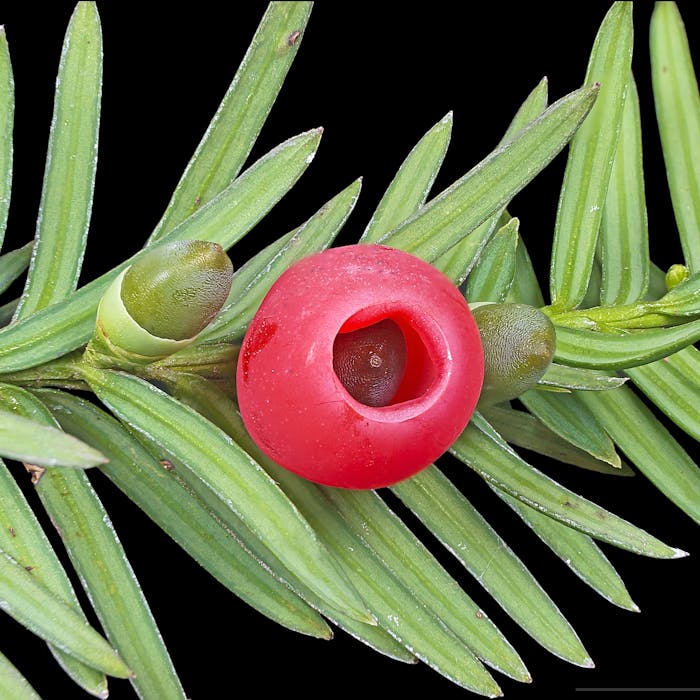
Yew - a useful and venerable tree
In the UK, there are only three native conifers: the Juniper, the Scots Pine and the Yew. Yews can live for thousands of years and are associated with churchyards and other sacred places.
The Yew is a slow growing evergreen tree and can be of great longevity. Estimating the age of a Yew can be difficult as they develop hollow trunks; dating by annual rings is next to impossible. These trunks may also fill with aerial roots that grow down from the crown.
One of the oldest Yew trees in the UK is the Fortingall Yew in Scotland.
Yew is to be found naturally on many soil types, though it is perhaps more common on chalk in the south east and limestone in the north. It is also found in the shade of oak woodlands, and during the last 300 years it has been widely planted in parks and gardens - as yew hedging. It tolerates clipping and topiary well, and is a common sight in the gardens of stately homes.
This is a dark coloured tree. Almost every part of the tree is poisonous - containing the alkaloid taxane.
The leaves are long and narrow – like a lance, tapering to a point at the tip. Chemicals extracted from the leaves are now used in the treatment of certain forms of cancer, where the toxic effects of the chemical slows down the multiplication of cancer cells.
Female trees take many years to reach maturity and then bear distinctive waxy red berries. Surprisingly, this flesh is the only part of the tree that is not poisonous to Man. However, encased within is a highly poisonous nut!
The wood of the tree has had a number of uses through history and pre-history. The earliest known use is as a thrusting spear from the Hoxnian inter-glacial period, which is many hundreds of thousands of years ago!
The burial ship at Sutton Hoo contained a Yew bucket; and the wood was much favoured in Norman times for the making of long bows. Its use in bow making may pre-date this by some thousands of years.
The wood is used in furniture making and is much favoured by wood turners. It has water resistant qualities and has often been used for house foundations.
Further reading
Links to external websites are not maintained by Bite Sized Britain. They are provided to give users access to additional information. Bite Sized Britain is not responsible for the content of these external websites.
